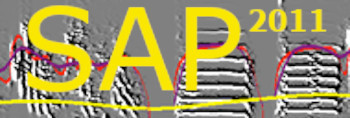Articulation based analysis
| < PREVIOUS: Introduction to song features | > NEXT: Viewing the features |
|
|
|
|
Articulation based analysis
The analytic framework of Sound Analysis is rooted in a robust spectral analysis technique that is used to identify acoustic features that have good articulatory correlates. The acoustic features that we chose to characterize zebra finch song are represented by a set of simple, one-dimensional measures designed to summarize the multidimensional information present in a spectrogram. A procedure for measuring similarity, based on such an analytic framework has the following advantages:
1. It enables the examination of one acoustic feature at a time, instead of having to cope with the entire complexity of the song of two birds. A distributed and then integrated assessment of similarity across different features promotes stability of scoring. 2. It is analytic: it evaluates each feature separately and tells you not only that two sounds are similar or different - by also in what sense they are similar/different. For example, it allows examination of how each of the features emerges during development and is affected by different experimental manipulations. Note that all the features presented here (except for amplitude) are amplitude invariant. That is, the amplitude of the sound recorded does not affect them and hence the distance between the bird and the microphone should have only minor effect as long as the shape of the sound wave has not been distorted by the environment. |
|
